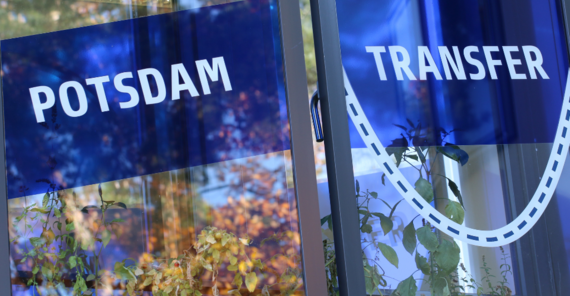Dr. Liebig, you work as an innovation manager at Potsdam Transfer, a central institution at the University of Potsdam that is committed to rapidly transferring research findings into practice. What is your recipe for success?
We try to work together with companies not just on a one-off basis, but on a long-term and sustainable basis, because in a close partnership it is often easier to jointly apply for funding for research and development projects. The advantage is obvious: companies benefit from the expertise and equipment of the university, which in turn gains access to a much wider range of funding programs. This increases the chance that inventions will not remain in a drawer, but will reach the market via business partners and generate direct added value.
What does it take to enter into such partnerships?
The trust of the individual players in the project is extremely important. In contrast to research institutions, companies do not receive 100% funding in such joint projects and therefore bear a higher risk in terms of feasibility. However, it is crucial that we at Potsdam Transfer know the exact needs of the industrial partner. Only then can we find suitable research teams at the university and clarify whether the goals are realistic and can be achieved together.
You are currently cooperating with K-UTEC AG SALT TECHNOLOGIES, a renowned service provider for the mining and raw materials industry. What was the need here?
The company was looking for a cost-effective solution for detecting lithium in the low concentration range. The problem is that waste containing lithium in very low concentrations is constantly being generated during production. On the one hand, they don't want to lose any of the valuable metal, and on the other, they want to optimize the processes so that there is no more lithium in the waste in future. I first took a look at the entire process at K-UTEC in Sondershausen in order to better understand the challenges of the existing system. We then discussed possible solutions and identified the specific problems. With this knowledge, I was then able to find a suitable research partner at the university, namely Prof. Dr. Michael Kumke's working group in Physical Chemistry.
What exactly can the working group contribute to solving the problem?
It has a great deal of experience in the analysis of geological samples, for example for the detection of copper, but also in the exploration of rare earth deposits or the detection of nutrients in soils. In this specific case, laser-induced plasma spectroscopy is used, an element-specific optical analysis method that can be used to determine the atomic composition of gaseous, liquid or solid samples. In addition to the expertise of the research group, we also needed another practical partner to manufacture a new device for the implementation of the project. With SECOPTA analytics GmbH in Teltow, we were very quickly able to find a regional company.
Were you also able to obtain funding for this project?
In this very fruitful cooperation, we had considered applying for funding right from the start. Based on K-UTEC's positive experience, the partners decided in favor of the German Federal Environmental Foundation.
PILOT TRIAL AT K-UTEC IN THURINGIA: THE AIM IS TO PRODUCE LITHIUM WITH "BATTERY GRADE" PURITY
The project outline was reviewed positively, allowing a complete application to be submitted for an initial feasibility study with a duration of one year. In addition to a more detailed cost breakdown, this naturally also included a presentation of economic and technical risks. This would not have been possible without the expertise and commitment of Dr. Toralf Beitz from the Physical Chemistry department. He will now also be responsible for the implementation of the project.
What happens after the feasibility study?
In the best case scenario, a three-year research and development project will follow. In the study, all those involved will try to prove that the formulated solution approach is realistic. The next steps can then be taken on the basis of the knowledge gained. Our aim is to produce an innovative device for lithium detection that can be used worldwide. For this reason, an expansion to include additional elements is planned depending on the demand from potential users.
This article was published in the university magazine Portal Transfer 2024.

